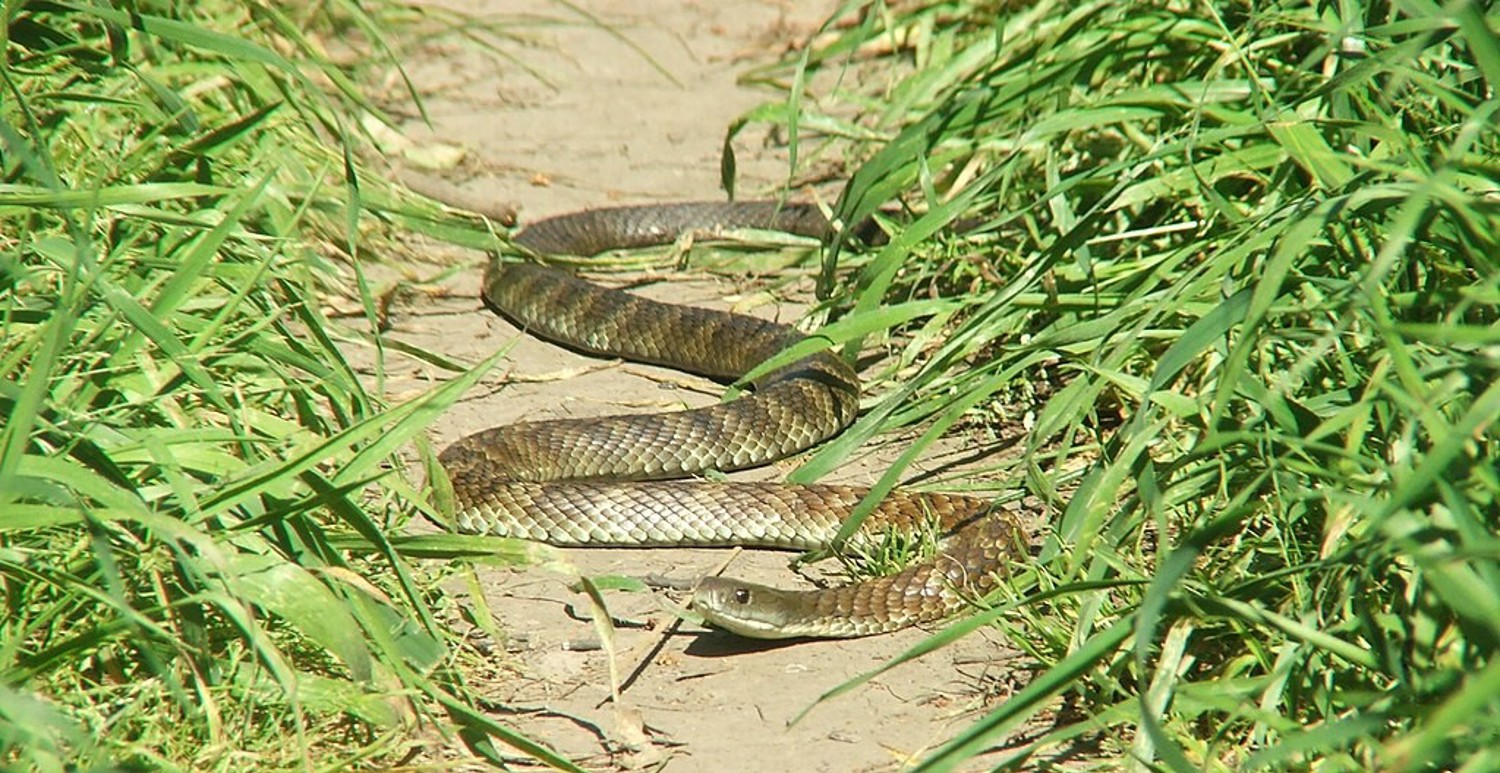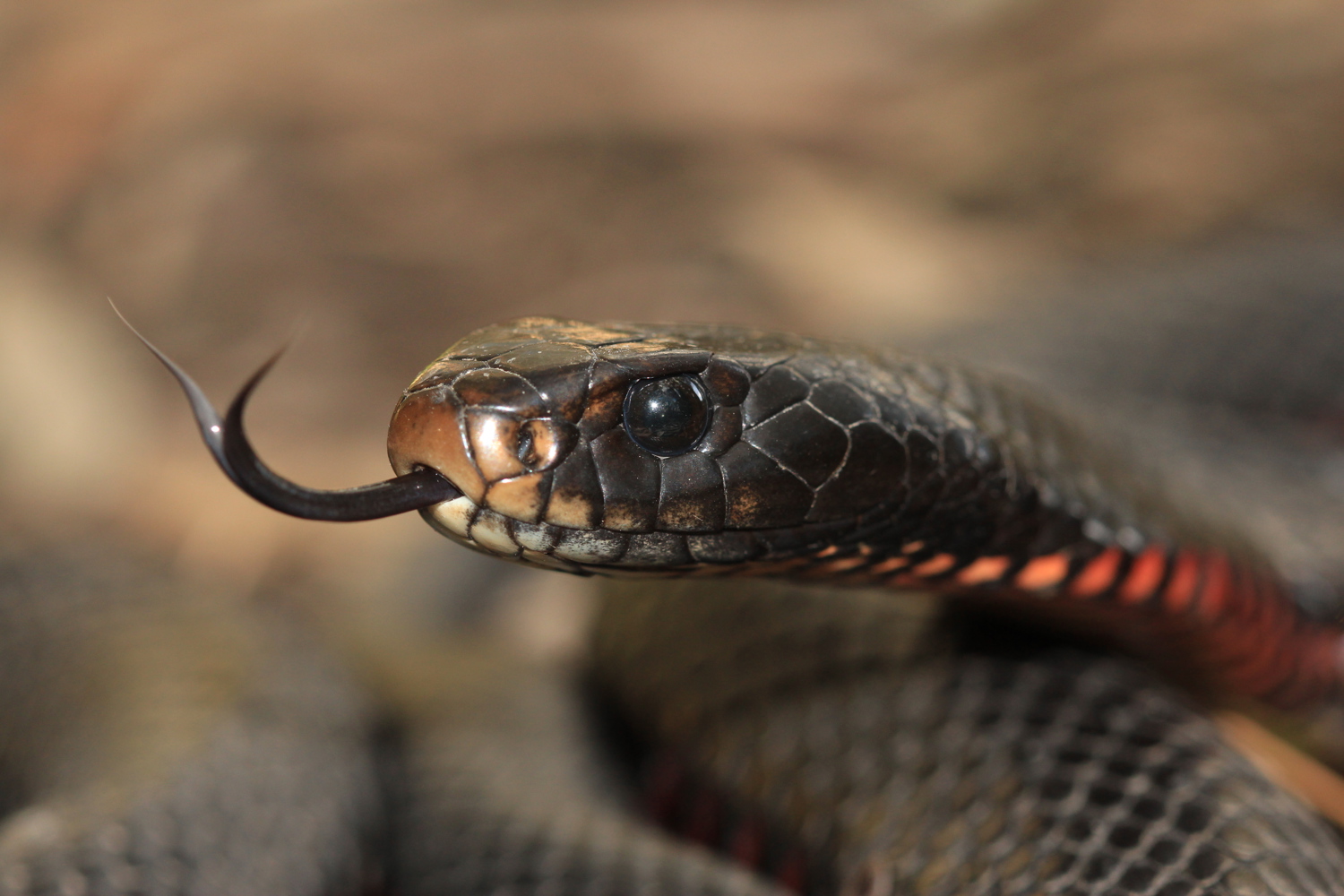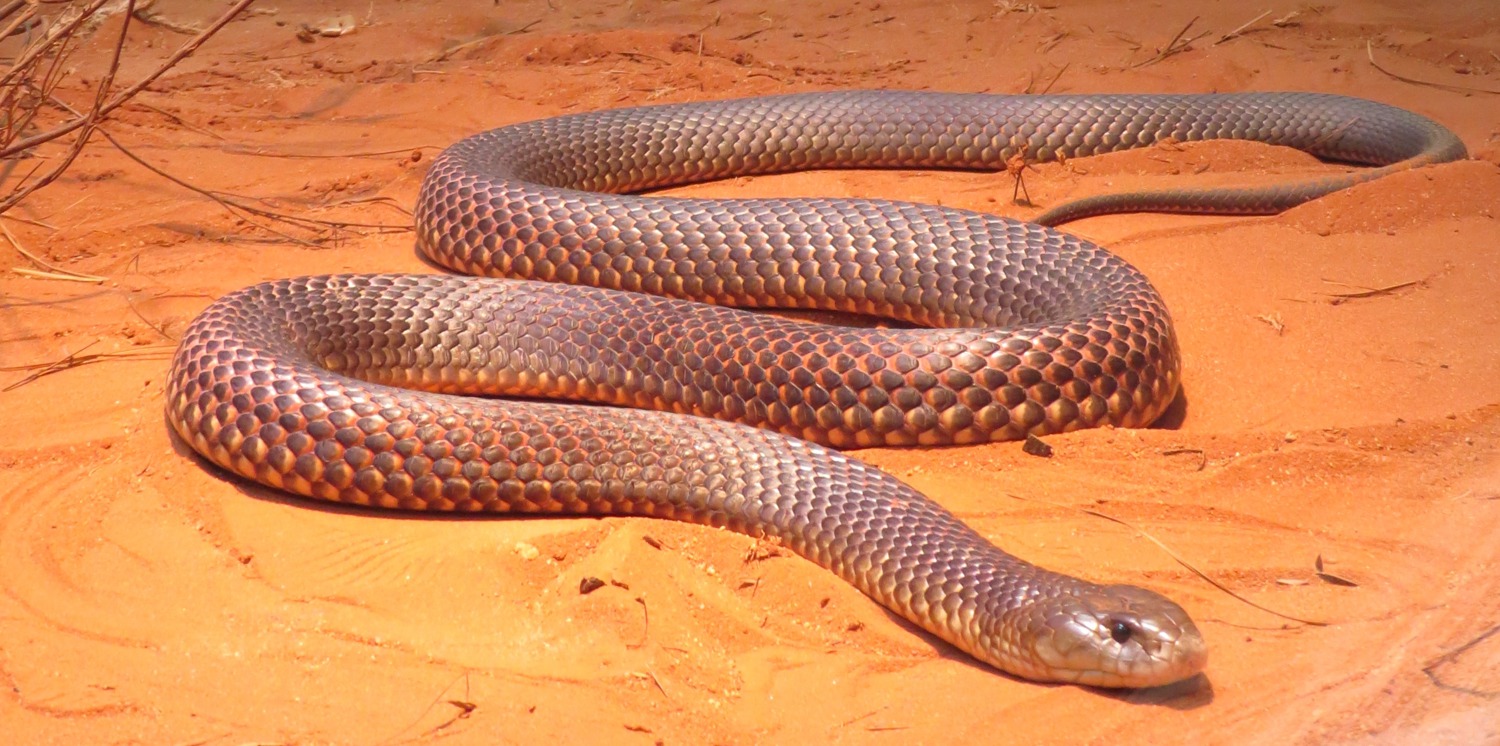Summer in Australia means hot weather, beach barbecues, and close encounters with a range of flying, crawling, and slithering wildlife – including snakes.
Yes, it’s that time of year again, when some of Australia’s most venomous residents are on the move, scaring the living daylights out of people in the process.
But despite the common perception that snakes are aggressive and deadly, this isn’t entirely true. In reality, most of Australia’s 140 species of land snakes are shy and non-confrontational.
In this article, we'll address frequently-asked questions about three of Australia's most feared snakes: the tiger snake, the red-bellied black snake and the brown snake.
Tiger Snakes
Tiger snakes (Notechis scutatus) are named for their distinctive yellow-and-black cross-band pattern; however not all Tiger snakes have these markings – some are entirely black or dark brown. Tiger snakes are thick-bodied and typically around 1.2 meters in length, but can get up to 2 meters long. They are primarily found in south-eastern Australia, usually near water sources like creeks, rivers, and marshes.
Are tiger snakes venomous?
Yes, tiger snakes are highly venomous. Their venom contains a powerful toxin that can stop blood from clotting and attacks the nervous system, causing muscle weakness and potentially leading to paralysis if untreated
Are tiger snakes aggressive?
Tiger snakes are not particularly aggressive unless provoked. Bites are relatively rare because these snakes generally avoid humans. If cornered, they may strike, but their first instinct is to retreat or hide.
Do tiger snakes lay eggs?
Tiger snakes are ovoviviparous, which means they give birth to live young rather than laying eggs. Mating occurs throughout the summer until late January, and female snakes can give birth to litters of 20 to 30 baby snakes.
Red-bellied Black Snakes
The red-bellied black snake (Pseudechis porphyriacus) is a common sight across eastern Australia, and often spotted near urban bushland or wetlands. Red-bellied black snakes are usually easy to identify, due to their glossy black back and a red, pinkish, or cream underside. These snakes typically grow between 1.2–1.5 meters in length.
Are red-bellied black snakes dangerous?
While red-bellied black snakes are venomous, their bites are rarely life-threatening to humans. There have been no confirmed deaths in Australia from this snake. They are generally shy, and usually only bite humans if they feel threatened.
Do red-bellied black snakes eat brown snakes?
There’s a common conception that if you see red-bellied black snakes in the area, you won’t see brown snakes, because red-bellied black snakes eat brown snakes. This is partly true; red-bellied blacks do eat other snakes – including brown snakes – but their presence does not guarantee that brown snakes won’t be in the area.
Red-bellied black snakes also eat a variety of other animals including frogs, lizards, fish and mammals. Sometimes they even try to eat cane toads; however, the toads’ toxin is deadly to red-bellied black snakes.
Brown Snakes
There are several species of ‘brown snakes’, though the name is often used to refer to the eastern or common brown snake (Pseudonaja textilis), which is found across the eastern states and southern coastline of Australia. Brown snakes are slender, medium-sized snakes that range from light tan to dark brown or even black in colour.
Are brown snakes venomous?
Brown snakes are highly venomous. Their venom can cause paralysis and stop blood from clotting, which can be deadly if not treated quickly. Brown snakes are responsible for about half of all serious snakebites in Australia over the past two decades. However, bites are relatively rare because these snakes prefer to avoid humans.
Do brown snakes lay eggs?
Unlike tiger snakes and red-bellied black snakes, brown snakes reproduce by laying eggs. Females lay 20 to 40 soft, leathery eggs in a clutch, in spring or summer. The female may stay close to the nest site, so if you do find snake eggs in your backyard, contact an experienced snake catcher.
Are brown snakes territorial?
Though territorial behaviour has been noted in some Australian snake species, there is no evidence that brown snakes, tiger snakes or red-bellied black snakes are particularly territorial. However, if they find a spot with plenty of food and shelter, they may hang around.
What if I spot a snake in my backyard?
- Never try to relocate a snake yourself, call a professional. Snakes are protected, so it is an offence to harm snakes. Trying to catch or kill a snake also increases your risk of being bitten.
- Make your yard less inviting: Mow regularly and remove piles of wood, rubbish, or toys where snakes could hide.
- Wear long pants, enclosed shoes, and gloves when gardening.
- Supervise children and pets in snake-prone areas, and teach them to respect snakes.
- Learn snakebite first aid: Stay calm, apply a pressure bandage, and seek medical help. Snakebite deaths are rare in Australia, but fast action is essential.
Co-existing with snakes
Although tiger snakes, red-bellied black snakes and brown snakes have a fearsome reputation, they are typically more afraid of us than we are of them and generally only act aggressively when provoked. Snakes also play important roles in nature: they help to balance ecosystems, recycle nutrients, keep rodent and spider populations down and spread seeds by preying on seed-eating animals.
So next time you encounter one of these fascinating species, give it plenty of space and appreciate the vital role it plays in nature.
Media enquiries: Please contact the Media Team media@usc.edu.au





